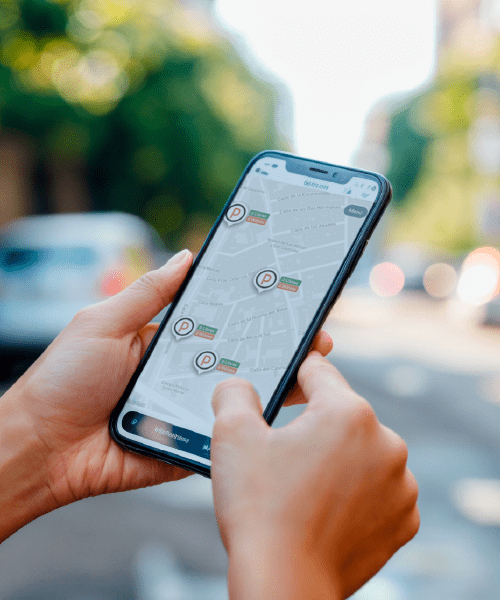
The revolution reaches service stations
The revolution reaches service stations
The energy transition and digitalization are accelerating a profound transformation of service stations. They are becoming multi-energy centers and comprehensive commercials, capable of offering a wide range of solutions for the transportation and consumption of drivers, from renewable fuels and electric charging to the collection of online purchases.
Since the company Standard Oil of California inaugurated its first fuel pump in Seattle (United States) in 1907, service stations became one of the basic pillars of the development of people and goods transport around the world. For over a century, these facilities hardly changed, beyond the arrival of fueling self-service and a certain evolution of their stores, which went from mere car lubricant and spare part storehouses to basic product stores and, now in the last few years, to local mini supermarkets.
These changes have accelerated in the last few years and today service stations are on the way towards a completely different concept to what we have known for so many years, incorporating not only new types of energy, but an entire range of products and services that often don't have anything to do with their traditional business. In this way, service stations are today becoming multiservice meeting points, where the driver can refuel or charge their vehicle, but also collect online orders, sit at a table to savor a good Iberian ham (jamón), or get good coverage to take part in a meeting.

Service stations are incorporating not only new types of energy, but a range of products and services that often don't have anything to do with their traditional business
One of the factors that is favoring this paradigm shift is the energy transition, which entails the use of new types of energy to reduce the CO2 emissions of transport. The energy offer of service stations has increased and today, for example, drivers of vehicles with combustion engines can refuel traditional fuels, but also new fuels of 100% renewable origin. If they have opted to move to an electric car, they have at their disposal a wide network of electric charging points, to which you also have to add supply points of other alternatives, such as natural gas vehicle or AutoGas.
The development of technology is also favoring some changes in habits of drivers. The improvement in the efficiency of combustion engines has reduced the consumption of fuels, while electric vehicles can now also be charged at home, work, shopping malls, and other public spaces. The result is that drivers now visit service stations less frequently, although they stay there for longer when they go to charge their electric car, as the charging times continue to be longer.

On the other hand, the use of new digital technologies is giving more power to consumers, who now relate with brands basically through their cellphones, have access to more information and, above all, more choice. In order to attract and retain these increasingly more demanding and informed customers, brands today are making an effort to make their purchases more comfortable and provide them with a more personalized and attractive offer, relying on digital tools such as artificial intelligence (AI) or the internet of things (IoT).
Service stations today are becoming multiservice meeting points, where the driver can refuel or charge their vehicle, but also collect online orders
Amidst these disruptive changes, the future of service stations involves transforming their current business model. In a study on the perspectives of the sector, Boston Consulting Group considers that "service stations must go from focusing on the vehicle to focusing on the consumer, which means focusing on addressing customers' needs in a comprehensive manner." Their priority must be, therefore, to give customers new reasons to visit stations apart from refueling or charging and make them stay longer.
This change of business model is already underway and today service stations are incorporating into their offer new products and services, both energy and non-energy. Moreover, they are transforming their facilities to make their customers' visits more comfortable. These are those with whom they try to establish a more emotional relationship, based on the use of digital tools that allow to personalize offers, benefit from savings and discounts, and make the entire purchase process easier.

- Diversification of the energy offer
One of the main catalysts of the transformation of service stations is the incorporation into their offer of new energy sources, which allow the reduction of the carbon dioxide (CO2) emissions of road transport, such as Nexa fuels of 100% renewable origin, electric charging, or natural gas vehicle.
- New products and non-energy services
Service stations can become key points not only for energy supply, but also for new purchase experiences and complementary services. With a charging time of electric vehicles considerably longer than that of traditional refueling, customers will have more opportunities to consume additional products, which opens the door to the incorporation of new services, such as the collection and return of online purchases.
- Spaces to improve the customer's experience
If they have something clear in the sector, it is that the future of service stations is closely linked to the consumer's experience. It's now not enough to provide a quick and efficient service. The current customer seeks more. Millions of people visit service stations every day and, although some only stop to refuel, increasingly more customers see in these stops an opportunity to make purchases or enjoy a good meal while they wait or rest from a long journey.
- Digital solutions for the customer
Another of the keys to improving the experience of customers is using digital technologies, to improve loyalty programs and payment solutions. In this field, "the aim is to create a fluid and attractive customer experience through the digitalization of the entire journey," Boston Consulting Group explains in its study, "from receiving information on promotional offers while the customer goes to the service station to the use of the cellphone to pay when leaving."


